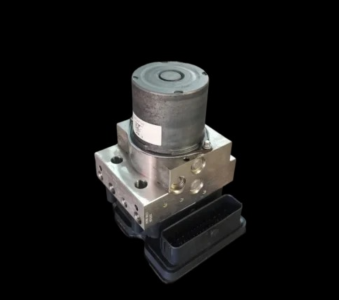ABS Control Module: The Core of Modern Braking Safety

ABS Control Module: The Core of Modern Braking Safety
In today’s vehicles, braking technology goes far beyond simply pressing the brake pedal to slow down. Safety systems are designed to help drivers maintain control in all kinds of conditions, and one of the most important among them is the Anti-lock Braking System (ABS). At the center of this system is the ABS control module — a highly responsive electronic unit that ensures your brakes work in the safest and most effective way possible.
What Is the ABS Control Module?
The ABS control module is an electronic brain that manages the anti-lock braking system. It constantly processes data from sensors located at each wheel, determining if and when to adjust brake pressure to prevent the wheels from locking up. By doing so, it allows the driver to maintain steering control and stability even during emergency stops or on slippery surfaces.
The module is built to operate in real time, meaning its decisions and actions happen within milliseconds. This speed is critical because braking situations can change in an instant.
How the ABS Control Module Works
The ABS control module uses a precise sequence of monitoring and response to keep braking safe and controlled:
- Sensor Data Collection: Wheel speed sensors send continuous information about each wheel’s rotation speed.
- Lock-Up Detection: The module compares wheel speeds to detect when one is about to lock up.
- Pressure Modulation: Hydraulic valves are signaled to reduce brake pressure to the affected wheel.
- Traction Recovery: When the wheel regains traction, brake pressure is increased again.
- Rapid Cycling: This cycle repeats many times per second to balance stopping power with steering control.
The combination of speed, precision, and constant monitoring makes the ABS control module one of the most advanced parts of a vehicle’s safety system.
Why It’s Important
The ABS control module is not just another component — it’s essential for:
- Maintaining Steering Ability: Prevents complete wheel lock so you can steer around hazards.
- Reducing Skidding Risks: Particularly valuable on wet, icy, or loose road surfaces.
- Supporting Other Systems: Works with traction control and stability control for a safer driving experience.
- Improving Braking Efficiency: Helps optimize stopping distances in many conditions.
Without the ABS control module, the anti-lock system would not function, leaving the driver dependent on traditional braking that’s more prone to skids and loss of control.
Signs of ABS Control Module Problems
A failing ABS control module can compromise safety. Common warning signs include:
- ABS Warning Light On: A dashboard alert that the system has detected a fault.
- ABS Not Activating: Brakes behave like a non-ABS system in emergencies.
- Erratic ABS Activation: The system engages unexpectedly or inconsistently.
- Multiple Warning Lights: May also affect traction and stability control indicators.
- Changes in Brake Pedal Feel: Unusual pulsations or resistance during braking.
These symptoms should be checked promptly to avoid safety risks.
The Role of Wheel Speed Sensors
The ABS control module relies heavily on wheel speed sensors to function correctly. These sensors detect each wheel’s rotation and send the data directly to the module. If a sensor fails or sends incorrect information, the ABS may not respond appropriately, which can lead to unsafe braking performance.
Integration with Other Vehicle Systems
Modern ABS control modules often work hand-in-hand with:
- Traction Control Systems: To prevent wheel spin during acceleration.
- Electronic Stability Control: To keep the vehicle stable during sudden maneuvers.
- Brake Assist Systems: To boost braking power in emergencies.
This integration allows the ABS control module to act as a hub in the vehicle’s network of safety features.
Conclusion
The ABS control module is a critical safety component that ensures your brakes can stop the car quickly while keeping it stable and steerable. By reading wheel speed data and adjusting brake pressure in real time, it prevents dangerous wheel lock-up and supports other advanced safety systems. Understanding its role highlights just how much technology goes into making modern driving safer.





